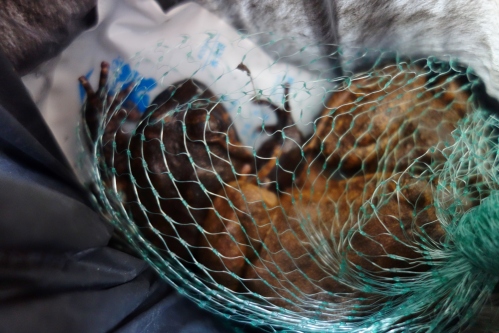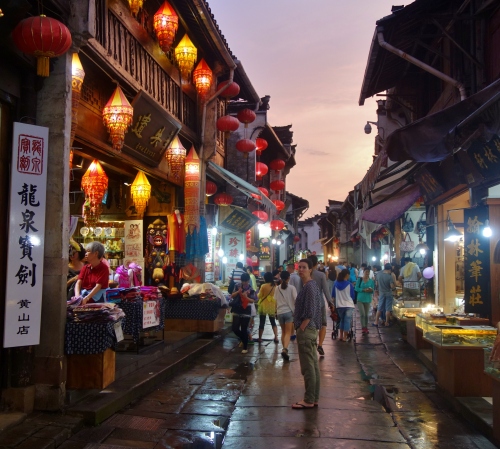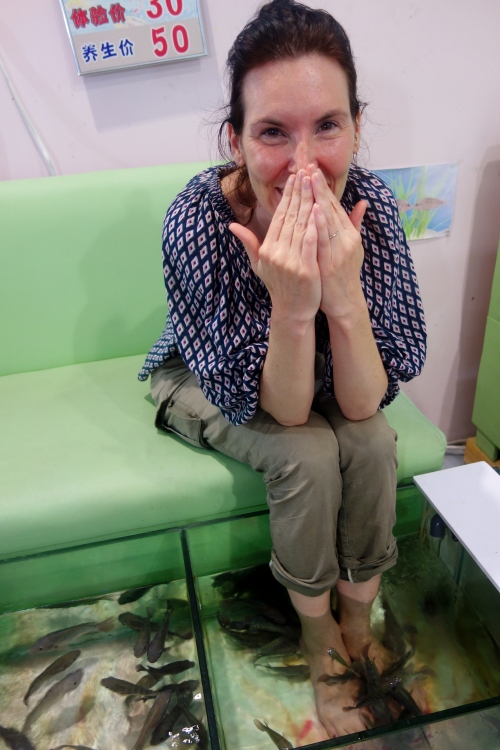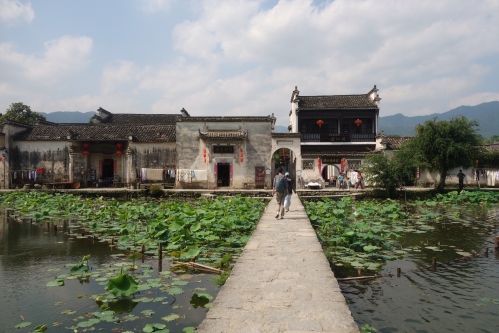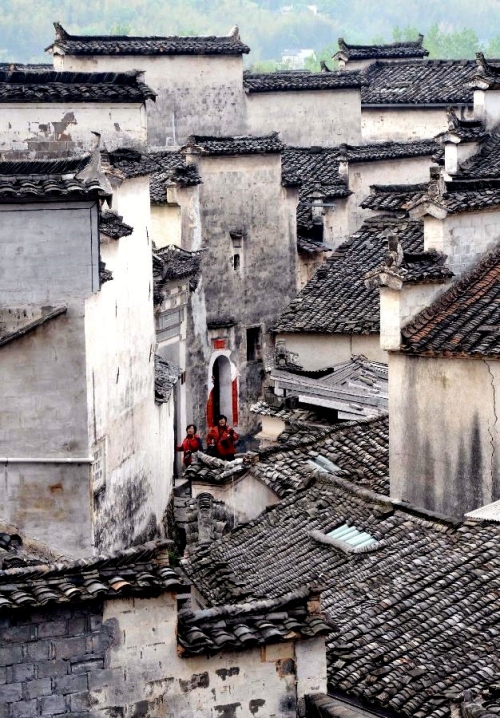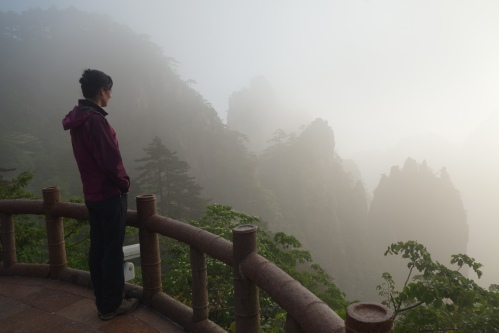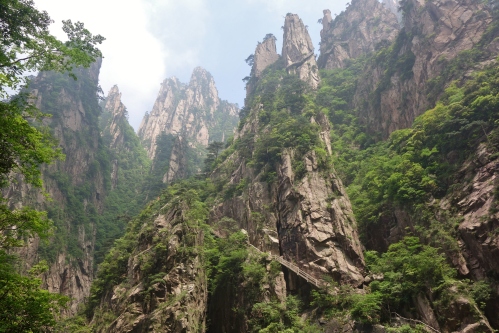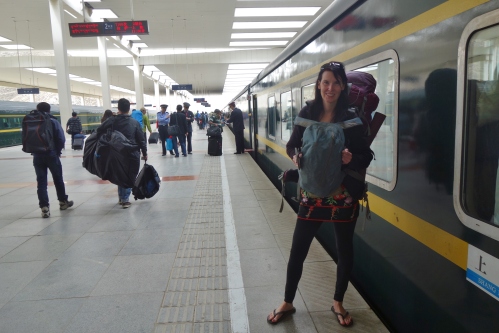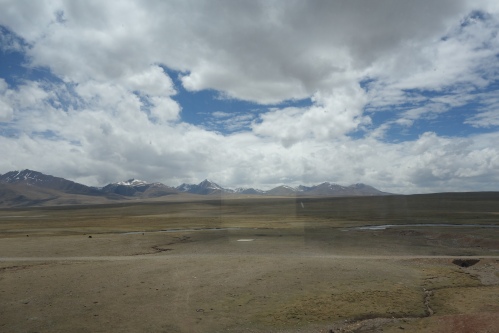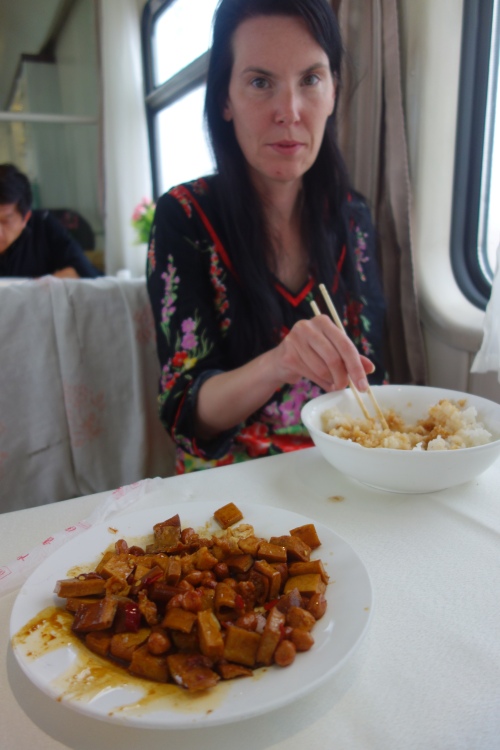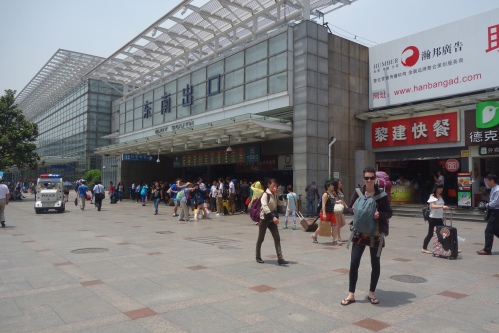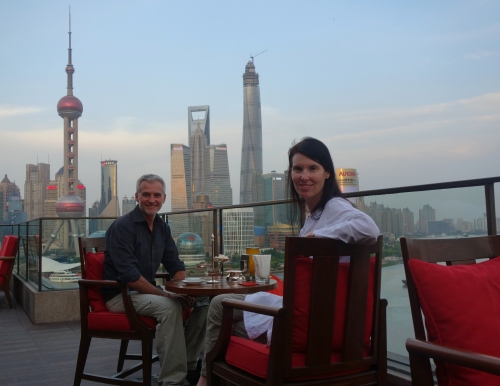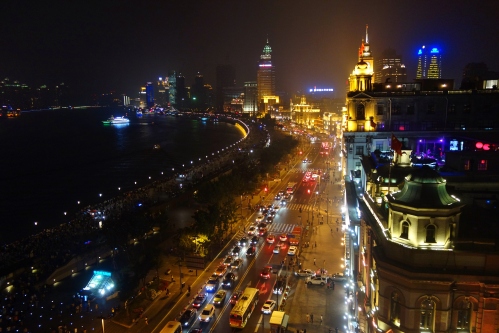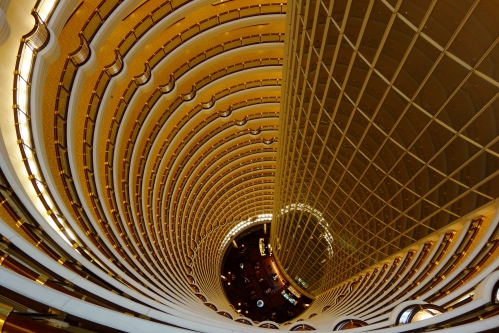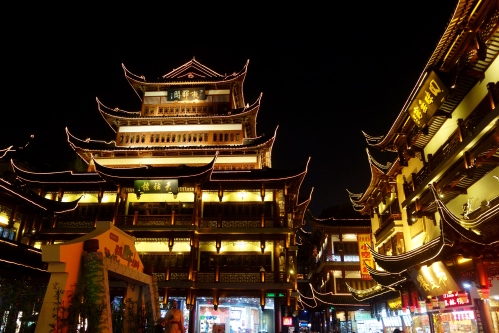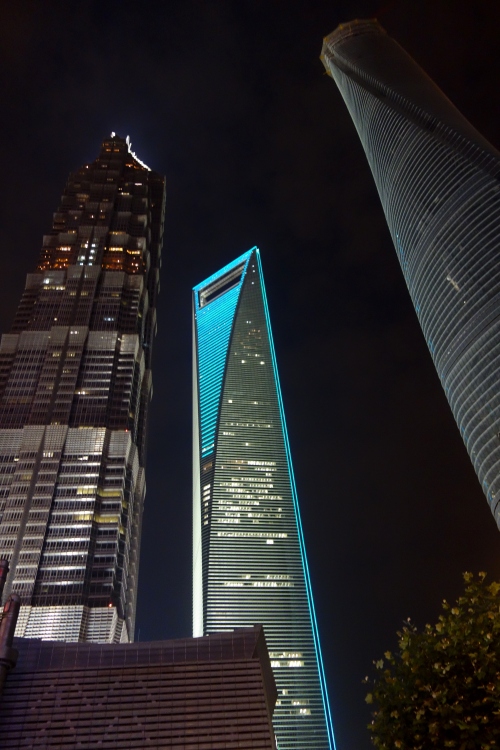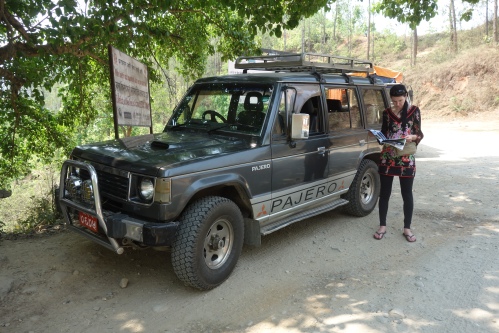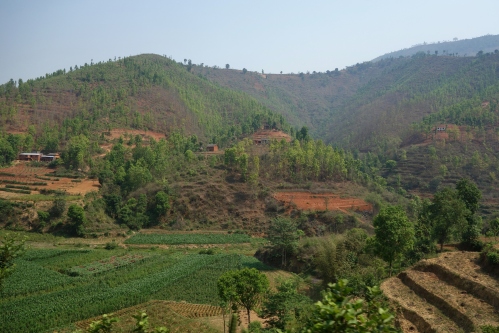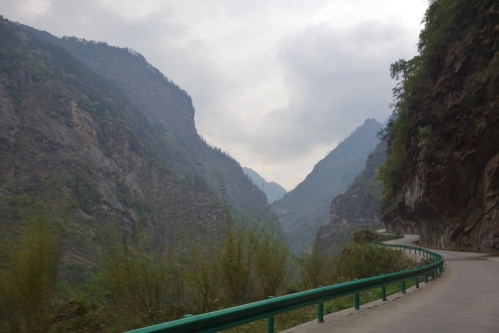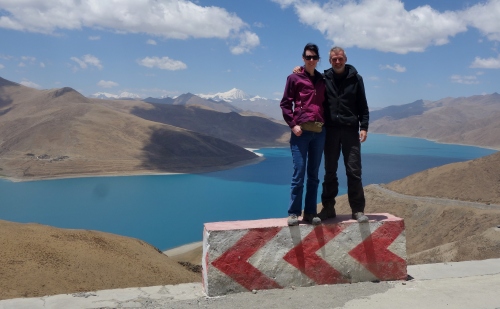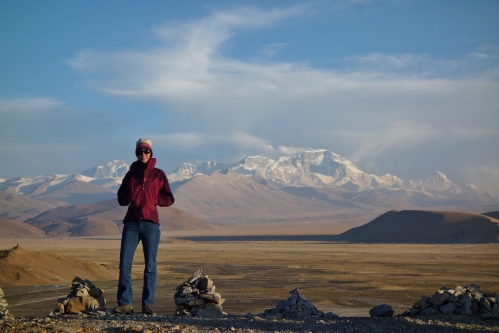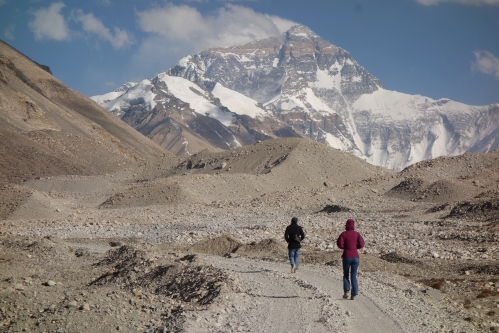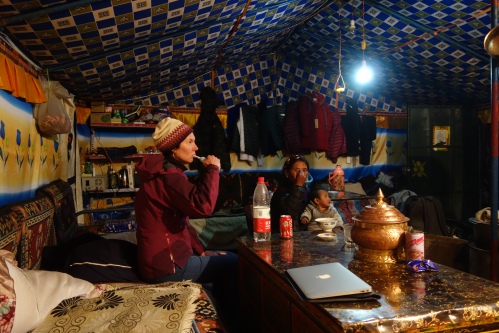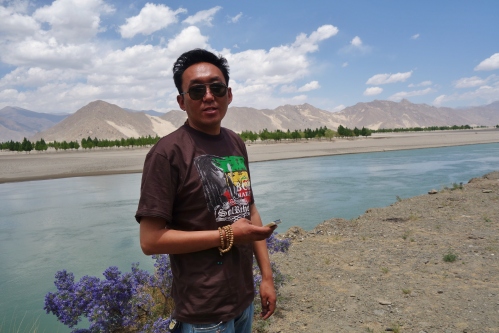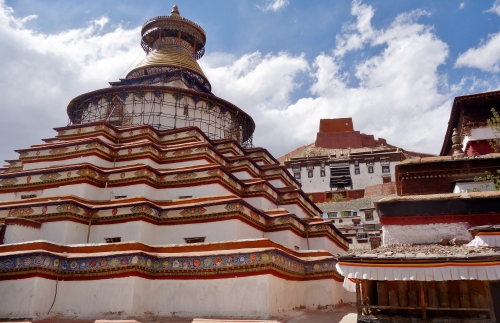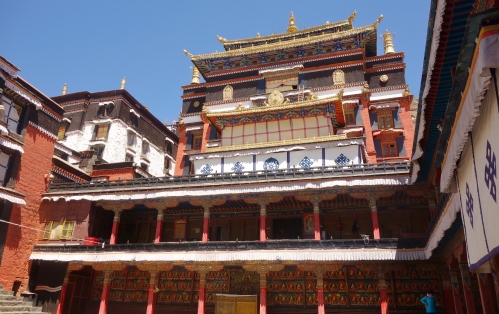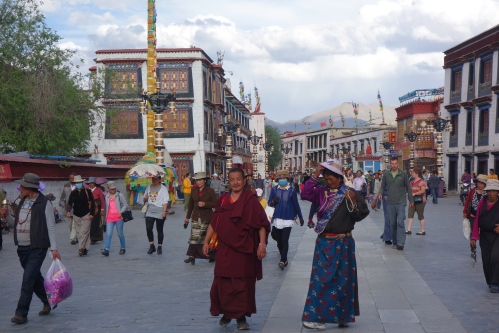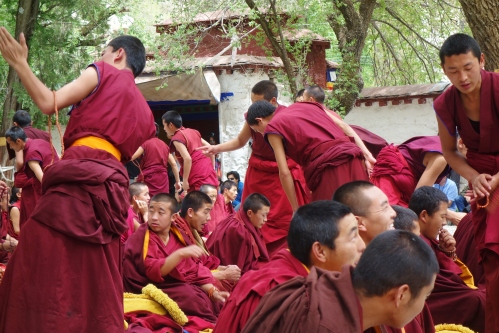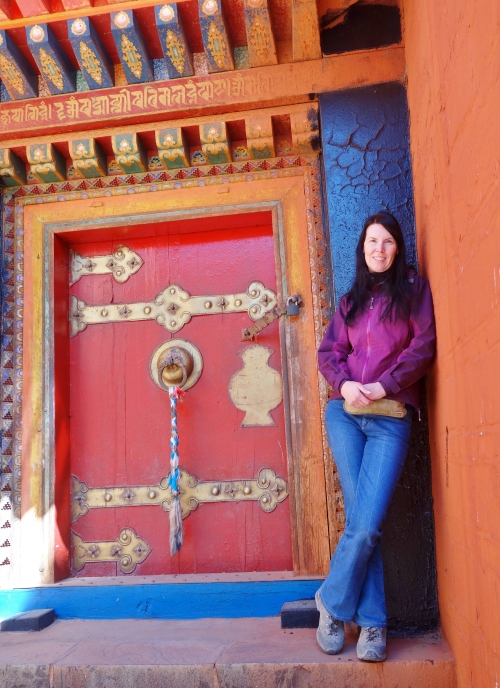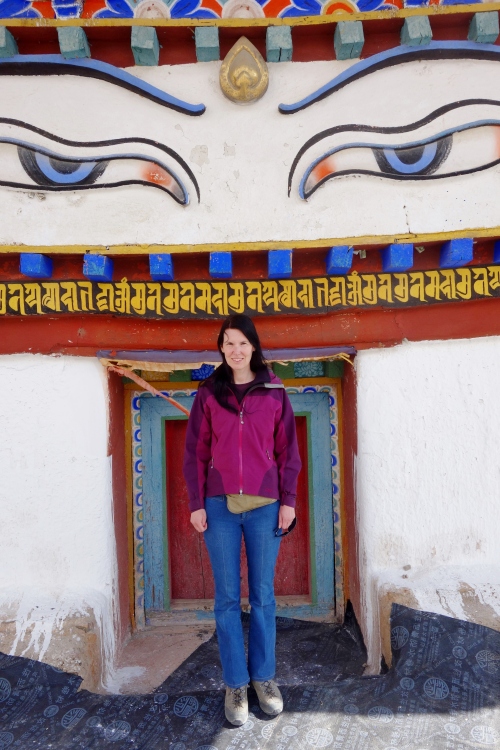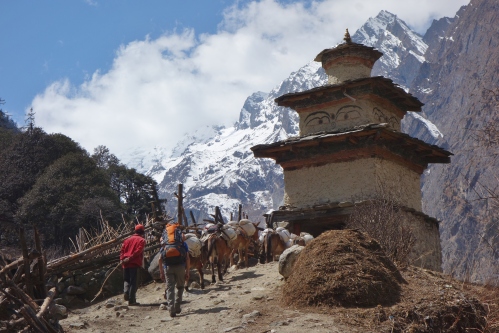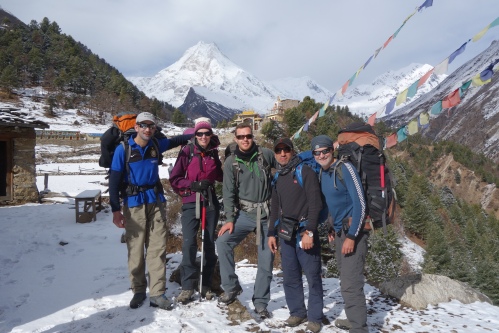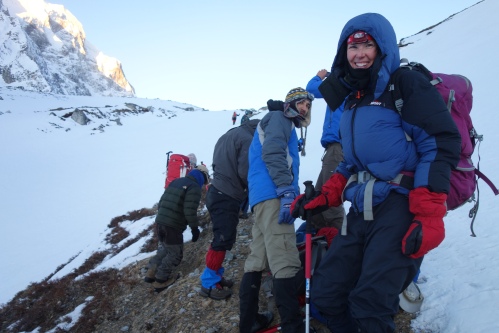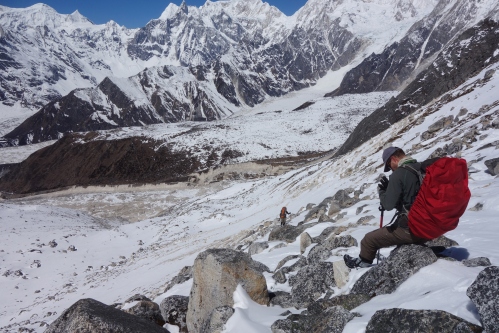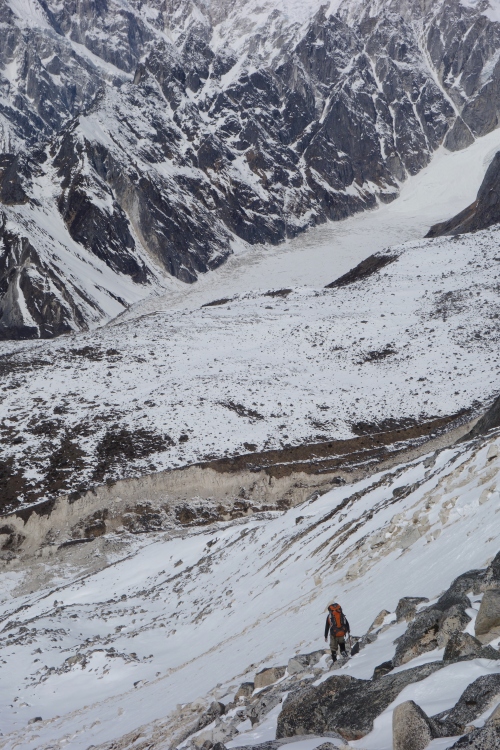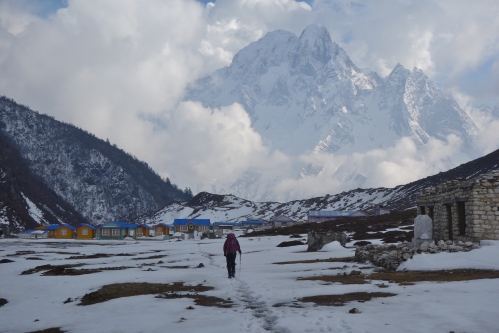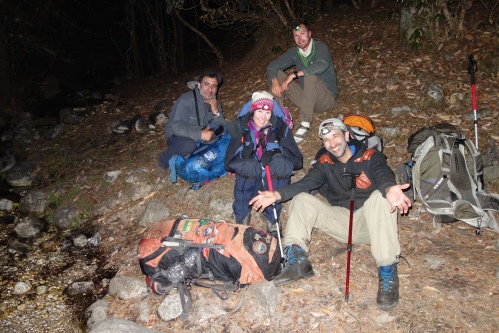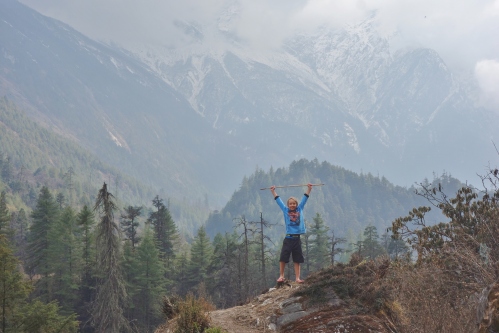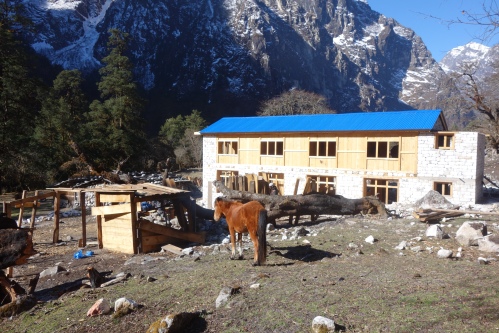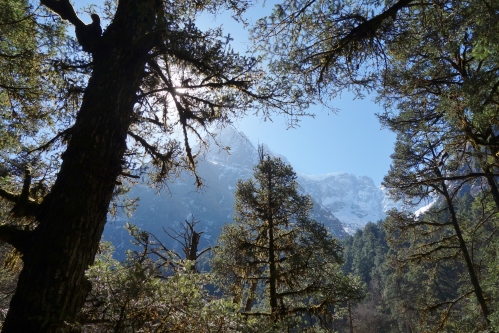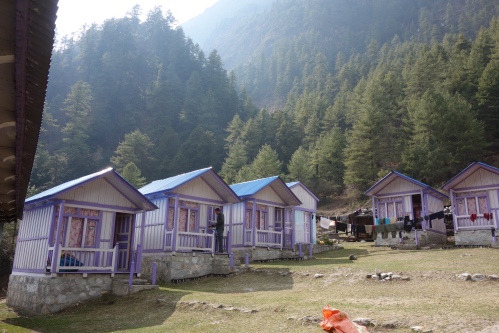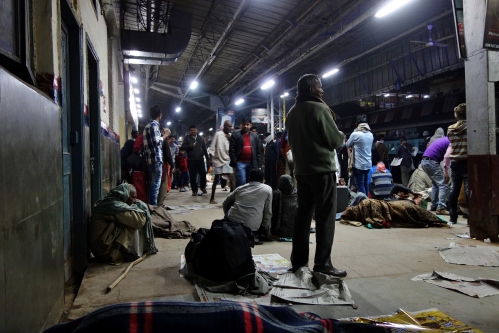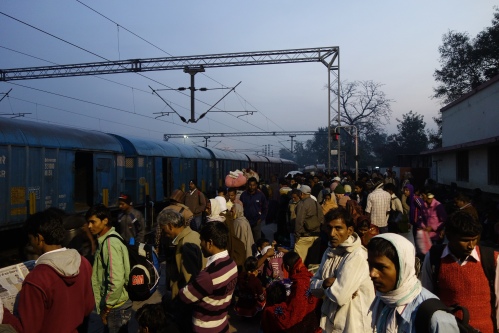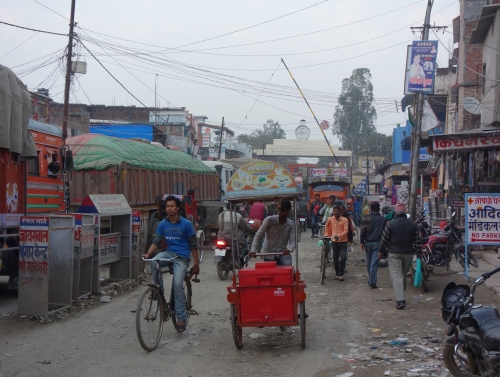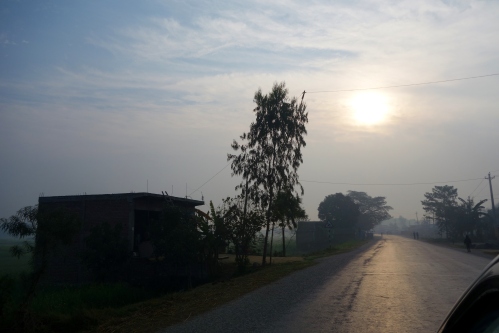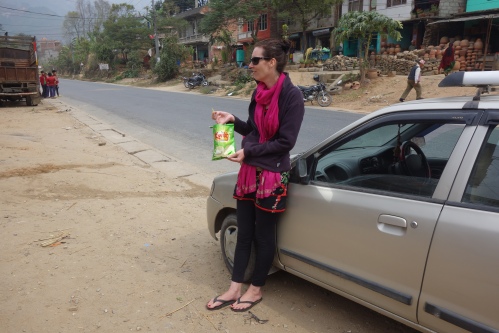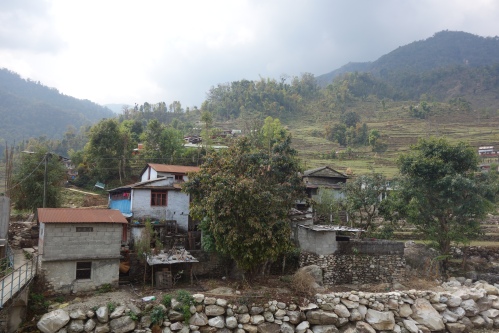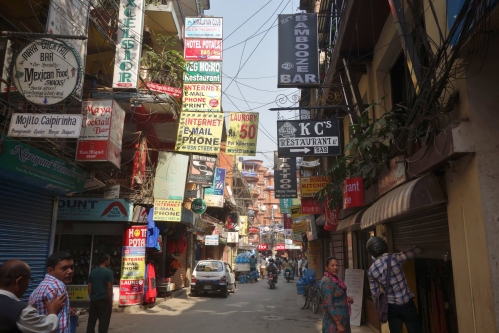It would seem our visit to Shanghai has been well timed as far as the weather is concerned at least. It’s a miserable morning of low cloud and drizzle. I can only hope our taxi driver is taking us to the south bus station as there is much conjecture and hesitation before setting off. It’s always difficult to know how much time to allow in getting to bus and train stations, especially in a foreign city the size of Shanghai. Guess work and a fair amount of contingency for unforeseen circumstances are required. The general formula is… the less time allowed equals heavier traffic. It always seems to be the way and this morning is no exception. We crawl along an elevated freeway for several miles anxious and cursing our optimism… or was it laziness.
The traffic eventually untangles and we arrive at the front of what I hope is the south bus terminal. The driver flicks of his meter before we have time to swipe our travel card. Small disaster and definitely not required when running uncomfortably late. The driver asks for cash but we are wanting to use the remaining credit on our travel card so it doesn’t go to waste. He resolves the issue by flag falling the meter three times and swiping the card, which I’m sure is more than the original fare but at least we have used up the remaining credit.
Our destination today is Tunxi a small Chinese city six hours south of Shanghai. Up until a week ago I had never heard of Tunxi. The reason for going here is that it serves as a gateway to Huangshan or the “Yellow Mountains” as they are translated in English. Most people outside of China have probably never heard of them either but they have been an inspiration for Chinese artists for centuries and as such present an iconic image of China.
Seated next to me in the bus is a friendly fellow who has immeasurable bad breath. He can’t speak a word of English but he doesn’t let this linguistic hurdle prevent socialisation. I think what I like about the Chinese is that they don’t give up. Some of them will persist in speaking Mandarin expecting that you must know some words, or perhaps if I say it louder you will understand me. My chap today ranks among the best of them. I begin to understand what is must be like for a non-English speaker as we are by far the worst offenders. In a country where communication is limited I treat such exchanges as precious but I wish he smoked less cigarettes. I take out my guide book and open the section on Mandarin pointing to a few phrases. He takes the book from me and starts thumbing through the pages occasionally pointing and naming certain cities. He must think me an idiot as I nod and grin each time. I feel awkward so return speech in English which seems to amuse him.
He points down to a bag between his legs and opens it. I peer inside and notice something moving in the dark. I open it a little further revealing five large brown toads. One of them is staring up at me and blinking. He laughs loudly pointing at me and then pointing to my stomach. Then starts patting and rubbing his own stomach and making sounds like a mother trying to convince a baby to eat. I think I may have identified the missing ingredient of his bad breath. I feel guilty about my thoughts of disgust as he is just a pleasant man being friendly to a foreign visitor. His ways here are correct. It would be like me inviting him back for a roast beef sandwich I suppose. I pat my own stomach gingerly with a pained face indicating illness and hope he understands. I’m just not ready for toad.
By the time we have reached Tunxi a few hours later the rain has eased a little. My travelling companion picks up his bag of toads waves goodbye and disappears forever. Like so many others along our journey I shall never see him again. Such an inconsequential encounter but one I shall remember from time to time as an unrequired act of kindness on his behalf. The taxi drivers in Tunxi seem more willing to pick up foreign visitors than their counterparts in Shanghai which is a relief. The ride from the Bus Station to the old town costs 10 Yuan; a short distance of about 10 minutes. After surveying a couple of hotels we eventually get a room for 150 Yuan or $25.00 USD in the Old Street youth hostel. China is proving to be expensive when compared to her many neighbours. As implied the old town is where a collection of Ming and Qing dynasty houses remain. The street is lined with Chinese lanterns and makes for a picturesque scene.
Strolling along the many shops I notice one that catches my eye. A line of people sat on leather sofas with their feet resting in fish tanks. A stout loud lady outside catches my interest and starts talking in Mandarin beckoning us inside. We follow her in and peer into the small tanks. Each one contains around 50 fish who are eating the dead skin off people’s feet. Some tanks have small fish others have medium and large fish. We are motioned to two empty tanks both containing… large fish. As we look down into the water they swim to the surface mouths open in anticipation. On the other hand I am unsure what to anticipate. Well you know what they say…No pain no gain. With some trepidation I plunge my feet into the hungry waters. The famished fish don’t waste any time and starting biting immediately. It is at first a very strange sensation and I doubt I shall last more than a few minutes let alone thirty. One fish who should be in the extra-large category carefully takes his time but delivers near fatal bites to my big toe. I expect to see the waters turn red with blood any moment now.
Our presence in the shop has drawn attention from the many domestic tourists passing by, who much to my surprise seem equally squeamish. The owner seems to taunt them a little yelling and pointing to us. I imagine she is saying something along the lines of “even these foreigners are doing it, what is wrong with you”. The shop is soon filled with locals who are staring into our tanks and laughing. I contemplate what the word for commission is in Chinese. We leave the shop with clean feet and big toes intact and go looking for some dinner among the many restaurants. All this biting and nibbling has made me hungry.
In between the Tunxi and Huangshan (Yellow Mountains) is the small traditional village of Hongcun, pronounced (Hong Schwan) as I am later to learn. Contained on three sides by a small river and backing onto a hill covered in forest it is well over 800 years old with many original buildings and ancestral halls dating from that period. Unlike many other heritage areas in China this is a living community and not just a collection of tourist shops. The elegant stone bridge that spans the river to the entrance of the village was used in the opening scenes of Crouching Tiger Hidden Dragon. Walking the through the narrow streets is like stepping back in time.
The buildings are white washed plaster with dark and ancient Chinese tiled roofs, sloping and curved with upward pointed ends. This is fairy tale China… just how you imagined it should be. We find accommodation with some ease given the many houses that have been converted to small hotels and homestays. One lady shows us a wonderful room with a view of the bridge but 300 Yuan is more than we are hoping to pay so we take the downstairs room for 180 instead. That night she cooks us a simple but tasty meal of fried pork with tomatoes and peppers and some steamed rice with a little chili.
Hidden in the tight lanes we discover during a night-time stroll an old hall that has been tastefully converted into a coffee shop. The sign outside says “best coffee in town” and given its size this seems highly possible. Such a claim must be investigated. The owners are American Chinese who live in Seattle but spend almost half their time in tiny Hongcun, which is not difficult to understand. They also make delicious waffles with chocolate sauce and milkshakes. Feeling full from dinner we return the next morning for breakfast. I am embarrassed to say that after being introduced I forget to write down the owners name and now can’t remember it, which is unfortunate as he kindly offers to drive us one hour north to Tangkou at the base of the Yellow Mountains. We thank him at first and politely decline but after hearing we will have to wait over three hours before the bus goes we take up his offer. I wish I could remember his name but I can’t. All I can say is, if you are ever in Hongcun make sure you pay a visit to the Granary for without doubt the best coffee and waffles in all of ancient China.
When we arrive at Tangkou there is no sign of the pine clad and misty peaks that feature so heavily in Chinese art, just a rather ordinary small city. The entrance to Huangshan Park is so far revealing little. Taxis and cars are not permitted in so we part farewell to our unnamed barista and take one of the blue park busses another 8km up to the start of the Eastern stairs. The entrance fee is as steep as the stairs to the top (of which there are many) 260 Yuan each nearly $45.00 USD. We begin the 7km ascent rising over a 1000m in elevation in warm cloud. An hour later and the temperature has noticeably dropped. The clouds and mist clear a little giving us a glimpse of the stunning cliffs and landscapes. There is no indication as to how far we have come but we continue up the unrelenting stairs feeling surprisingly good. I think Nepal and Tibet are still paying dividends as we pass many fatigued and worn out souls.
We reach the top of White Goose ridge in just under two hours, just in time to see dense grey cloud settle over the mountains blocking any views. Just as well that we have planned to stay two nights at the top which is highly advisable if you don’t want to be disappointed. There are several large hotels located on a few ridges on top of the mountains. All seem to have signs giving directions except for ours. Most of the signage is in Chinese as you would expect so I should be grateful for the odd hint of English even if it’s more confusing rather than confirming.
We head towards to the West sea Canyon and come upon the Xihai hotel. Try pronouncing that to Chinese while searching… it goes something like (She High) which I later discover means West Sea. Anyway the rooms are very good but the food is terrible and overpriced. The coffee shop that looks so promising never opens during our entire three day stay but none of this really matters, it’s the views we have come to see. But I do wish I could get some of that fried pork and waffles from Hongcun again.
The next morning is greeted with dark cloud and disappointment but we head out early into the gloom regardless. Gathered at the edge of a vast void of grey is a small group of optimistic types hoping the cloud will lift. Huangshan it seems is a place of tolerance and patience so we wait anyway slightly disgruntled. One Chinese man says hello to us. His English is excellent, turns out he is from Ashfield in Sydney our home city. Our patience is rewarded the sun burns through the cloud to reveal wonderful views in the morning light. The valleys are filled with fog, the peaks are veiled in mist as far as you can see. No wonder this scene is depicted on the back of the 5 Yuan note.
Twisted and abnormal shaped pine trees cling to the steep peaks with such names as…Flower blooming on a brush tip, Beginning to believe, Purple cloud and the rather out of place and more recently named Mobile Phone peak. We descend lower into the west sea canyon on a stone staircase that clings to the cliffs; dropping ever deeper into a dense green almost prehistoric chasm. Towers of rock rise high above with huge boulders resting in precarious positions. One such structure is named the camel for obvious reasons.
The western stairs are twice as long as the eastern version and although feeling fit and strong I am glad when we finally reach the bottom that we are not going up. We pass people who are either masochistic or completely ignorant as to what lies ahead. I genuinely feel sorry them as many look ill prepared and simply not capable of such a strenuous ascent.
What lies ahead for us is an overnight train to Hong Kong…

